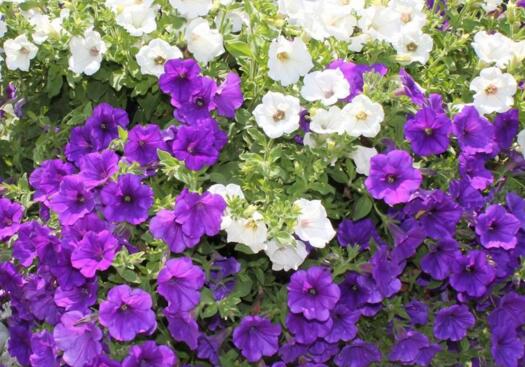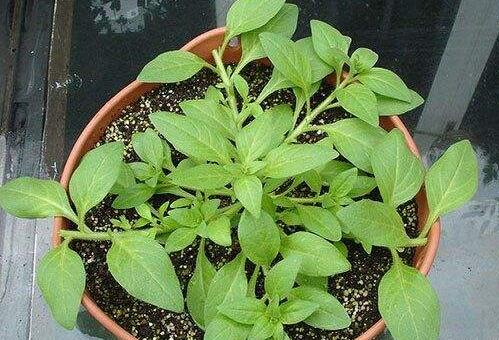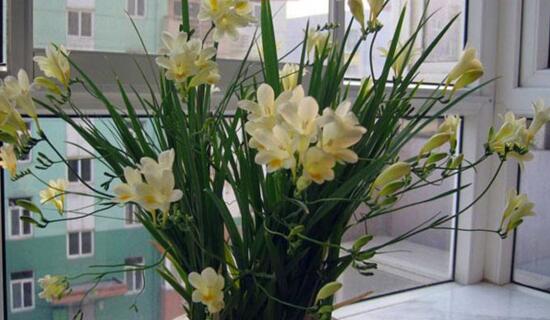What to do with petunia wilting? stagnant water is the main reason / scientific watering pay attention to waterlogging prevention.
The planting method of petunia is relatively easy, as long as there is enough light and moist environment, it can grow quickly, but sometimes the plant will wither and wilt because the details are not done well, making some flower friends have a headache. so petunia wilt Yan what to do? Let's take a look at the causes and solutions.
What if the petunia withered?
1. Too much watering

Petunia likes a humid environment, so it should usually create a humid environment, but some flower friends often water the soil twice a day, resulting in excessive wetting of the soil, so there will be problems with the growth of the roots. Plant wilting caused by watering is also common when raising other flowers.
Solution: immediately control the frequency and dosage of watering, do not water when the soil is still wet, especially without water stains, otherwise it is easy to have rotten roots, watering methods can refer to the detailed description of how to water petunia.
2. Poor drainage
In addition to watering, it is easy to have stagnant water, but it is also easy to occur if you do not pay attention to drainage during the rainy season, because some flower friends will put it on the balcony and maintain it outdoors, and then do not move them indoors in time when it rains. As a result, Rain Water gathered in the basin and soaked the roots of petunia.
Solution: re-cut the petunia, cut off all its branches, and then pay attention to the management in a cool place, waiting for its roots to sprout, and then pay attention to the drainage and waterlogging in the rainy season, and do not ignore the harm of stagnant water to the petunia.
3. Lack of light
Petunia needs plenty of light, and it can be managed in the sun except summer. If it is placed in a darker environment, its branches and leaves will wither after a period of time, which is due to lack of photosynthesis.
Solution: what if the petunia withered because of the lighting problem? There is no doubt that you need to increase the light and remove it from the dark environment, preferably in a brighter place. If you can get enough light for 12 hours a day, its flowers will be brighter.
4. Diseases and insect pests
White mildew, leaf spot, aphids and so on, if not dealt with in time, may cause petunia wilting, they will make the leaves lack of nutrition, but also will continue to spread, especially aphids will cause more diseases. If not cleared as soon as possible, it will not only lead to poor plant growth, but also make petunia die.
Solution: in order to do a good job in the prevention and treatment of diseases and insect pests, we usually need to avoid wind damage, rainforest, too high humidity, and so on. We can often irrigate some chlorothalonil solution, and when we find pests, we need to spray them with drugs, such as omethoate, Dysenammonium, and so on.
How to water the petunia, how often to water the petunia / the soil surface is white / do not accumulate water
When planting petunia, moisture is related to its growth speed, and even affects its health. If the soil is too moist, its roots will rot and age, and too dry will make the roots grow badly, so watering must be done well. So how do petunia water? The editor came to tell you the watering skills.
How to water petunia
Before introducing the watering method, we need to understand the water requirements in the growth habits of petunia. First of all, it likes the wet environment, but it is more afraid of wet water, so it is necessary to do a good job of drainage and waterlogging in the rainy season, watering can not appear stagnant water, watering methods must be thoroughly watered.
How often are petunia watered?
1. Seedling stage
When sowing and reproducing, you need to water thoroughly after sowing the seeds, and then you don't need to water them again. If the soil is relatively dry, you can spray water until the seedlings grow real leaves. You must pay attention to the humidity, otherwise the root growth will be hindered.
2. Growth stage
Petunia has a high demand for water, but in order to prevent the soil from getting too wet, it can't be watered frequently during the growth stage, so how do petunia water at this time? Generally, it is watered once a week, as long as it is watered thoroughly every time, it can meet its normal growth.
3. High temperature period
Petunia can withstand the high temperature of 35 degrees, but at this time, it is necessary to replenish water in time, otherwise it will cause transpiration and lead to lack of water and yellowing of plant stems and leaves, so it is generally necessary to irrigate water once in the morning and evening at high temperature. the soil must be slightly moist.
4. Low temperature period
When the temperature is relatively low, you should not water too hard, but try to control the watering times. As long as the soil is not completely dried, you do not need watering. One of the ways is to spray more water, which can not only keep the humidity moderate, but also ensure that the petunia will not be short of water. In addition, we need to pay attention to the control of water temperature.
Matters needing attention in watering Petunia
1. Check the drainage capacity of soil. In the planting method of petunia, we have repeatedly stressed the need to avoid stagnant water. in addition to watering too much, we also need to always check whether the drainage of some soil is good, and the bottom drain hole should ensure that excess water can flow out. Otherwise, it means that there is a problem with drainage, and it is necessary to loosen the soil or change the basin in time.
2. Pay attention to climate change in watering. The above four techniques can be used as a reference for our watering, but in practice, we need to adjust flexibly according to climate change. For example, the water consumption of petunia is slower during the rainy season, so watering needs to be reduced. The specific conditions should be based on the dry and wet soil.
Petunia-Petunia planting method | Petunia Picture | Petunia how to raise Petunia Petunia (Latin name: Petunia hybrida Vilm) also known as Bidong eggplant, hybrid bangyu Chaoyan, Ganoderma lucidum peony, shuttlecock flower, dwarf trumpet, sweet potato flower, bangyu Chaoyan, is a perennial herb, often cultivated for one or two years; plant height 15~80cm, also has tufted and creeping types; oval or oval leaves After sowing, it can blossom in the same year, the flowering period is as long as several months, and the Corolla is trumpet-shaped. Planting method of Petunia
1. Soil: petunia is afraid of water, which will cause rotting roots, so potted petunia should use loose, fertile and well-drained sandy loam.
2. Watering: petunia should be watered properly to prevent it from being too dry or too wet. Over-dried plants are easy to wither, and too wet to rot roots. Summer weather is hot, evaporation is the largest, should be timely supplementary watering, to keep the basin soil moist without stagnant water, rainy season need timely drainage and waterlogging prevention.
3. Illumination: Petunia is a long-day plant, which requires strong light conditions for photosynthesis to proceed smoothly, so sufficient light should be given to both potted and ground plants. If the sun is sufficient, the growth is strong, the leaves are luxuriant and the flowers are numerous; if the light is not enough, the branches and leaves are easy to grow, and the flowering quality is poor. If you can give more than 12 hours of light every day, and the night temperature is more than 10 ℃, it can blossom in four seasons.
Breeding methods of Petunia
Petunia cuttage breeding method:
Petunia cutting should be carried out in the period from late spring to Meiyu, when the temperature is not very hot, it is easier to take root and survive, or after autumn is cool, cut the germinated top twigs, length 10 cm, insert them into the sand bed, and insert soil temperature 20-25 ℃. Note that except that the first watering can be slightly larger after cutting, the later watering should be sprinkled frequently and less watering, otherwise the branches inserted into the underground part are very easy to rot and die, and take root 15-20 days after cutting. It can be transplanted into pot in 30 days.
Petunia sowing and breeding method:
The seeds of petunia are very small, sown and maintained properly, and the germination rate can reach more than 60 ^. The sowing and breeding of petunia is suitable for indoor pot sowing and the mixture of high temperature sterilized culture soil, rotten leaf soil and fine sand. After sowing, there is no need to cover the soil, it can be lightly pressed, and the optimum temperature for germination is 20-22 ℃. After sowing, it can germinate after 7-10 days. When true leaves appear, the suitable room temperature is 13-15 ℃.
A complete Collection of Petunia varieties
Fantasia: single dense flower variety, plant height 25cm 30cm, flower small, belongs to mini type, flower diameter 2.5cm 3cm, strong branching, among which SkyBlue is the most prominent.
Merlin: single dense flower variety, plant height 25 cm, early flower species, strong branching, flower color diversity, from sowing to flowering takes 80 days, is a disease-resistant variety.
Carpet: single multi-flower variety, heat-resistant variety, strong branching, compact flowers, in which flame (Flame) petals red, with golden throat.
Blind beads: flowers 10 cm in diameter, petals with dark veins, orange, blue, pink, purple and so on.
Dream: plant height 18 cm 20 cm, disease-resistant varieties, including rose dream flower rose red, yellow heart, flower diameter 8 cm 10 cm.
The function of Petunia
The function of petunia: 1. Decorate the home
Petunia flowers are colorful and colorful, and the decorative flowers with exuberant growth can be widely used in flower bed layout, flower trough configuration, scenic spot decoration, window sill decoration, family decoration, etc., whether it is potted ornamental at home, or hanging pot planting embellishment, will have a very good beautification effect, is a good helper to beautify the home.
The function of Petunia: 2. Gift
Petunia can also be used as a gift to express one's heart, petunia flower language is peace of mind, with you I feel warm; white petunia flower language is there; purple petunia flower language is broken love. The moral of petunia of different colors is also different, but the moral of petunia is relatively beautiful, and it is also a good choice to give it as a gift to express its wishes.
The leaves of petunia turn yellow.
1. Soil and water is alkaline. Petunia is suitable for breeding in slightly acidic soil and water. if the soil and water is alkaline and there is a lack of soluble iron and other elements that can be absorbed by it, the leaves will gradually turn yellow. Acid soil and water should be selected when planting, and alum and fertilizer water should be often irrigated during the growth period.
2. The humidity is too low. When the indoor air is too dry, petunia often appear leaf tip drying or leaf edge scorching and other phenomena. Attention should be paid to water spraying, plastic film cover and other methods to increase air humidity.
Prevention and control of petunia diseases and insect pests
Petunia white rust:
White rust mainly harmed the leaves, petioles and tender stems of Petunia. At the initial stage, the damaged leaves had light green spots on the leaves, then gradually turned into light yellow, and then expanded into large disease spots. In the later stage, a white scar appeared on the back of the disease part. When the tender stem was damaged, the flowers and stems were twisted. When the disease spot surrounded the petiole and tender shoots, the host parts above ring cutting grew poorly, shrunk and died. Solution: spraying 1% Bordeaux solution or 50% Phytophthora 500 times solution at the initial stage of the disease, spraying once every 10 to 15 days has a better control effect.
Related encyclopedia
Pocket scale non-woven bag lantern bamboo shoots crab feet red rice note3ykk zipper ybs zipper mountain cherry climbing wall plum field decision tomorrow winter plum green pine watch omega Longine watch children's building blocks rhododendron roll stick fruit Annona
- Prev

How to prune petunias, petunias topping diagram/remove terminal buds/position is appropriate
Petunia flower period is long, and ornamental value is high, so it is often considered to be the king of grass flowers, in order to have a pot of flourishing leaves and beautiful petunia, in addition to the correct petunia planting method, but also need to timely top it
- Next

How to plant potted ginger flowers, the cultivation methods of ginger flowers / five techniques can be exploded.
Ginger flower is not only beautiful in shape, but also has high edible and medicinal value. Many flower lovers choose to plant ginger flower precisely because of its many effects and functions, but they need to have some understanding of its planting skills before raising it. And how to plant potted ginger flowers? Let's take a look at the culture methods of ginger flowers.
Related
- Fuxing push coffee new agricultural production and marketing class: lack of small-scale processing plants
- Jujube rice field leisure farm deep ploughing Yilan for five years to create a space for organic food and play
- Nongyu Farm-A trial of organic papaya for brave women with advanced technology
- Four points for attention in the prevention and control of diseases and insect pests of edible fungi
- How to add nutrient solution to Edible Fungi
- Is there any good way to control edible fungus mites?
- Open Inoculation Technology of Edible Fungi
- Is there any clever way to use fertilizer for edible fungus in winter?
- What agents are used to kill the pathogens of edible fungi in the mushroom shed?
- Rapid drying of Edible Fungi

